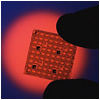
|

Agriculture
- Land Reform in Postwar Japan
- Why Japan's Land Reform Succeeded
- Wet Rice Agriculture
- Transplanting Rice Seedlings
- Early Mechanization of Agriculture
- Reorganization of Farm Land
- Innovations in Fruit and Vegetable Farming
- Rice Rationing and Subsidies
- Japan’s Shrinking Farm Population
- Farm Household Size and the Problem of Succession
- Who Farms in Japanese Farm Households?
- San-Chan Nōgyō
- The Changing Japanese Diet
- Dairy Farming in Japan
- What Dairy Products Do Japanese Eat?
- Beef Cattle in Japan
- The Changing Income of Farm Households
- Raising Silkworms in Japan
- Food Self-Sufficiency in Japan
- Food Self-Sufficiency in Rice
- Organic Farming in Japan
|

San-Chan Nōgyō means everyone works.
Photo from NHK.or.jp.
San-Chan Nōgyō
Part-time farming, or kengyō nōka, remains a big part of farm life in Japan. The mechanization of agriculture even on a small scale meant that much less human labor was needed to grow rice. Family members could take other paying jobs, and only help with farming during the busiest transplanting and harvesting times. When the father in the family works at an outside job, often it is his parents and wife who do nearly all of the farm work. This kind of family farming came to be called “san-chan nōgyō” because the farming (nōgyō) is done by grandfather (ojī-chan), grandmother (obā-chan) and mother (okā-chan), the three (san) “chan.” Nowadays even the mother in such a family is likely to have an outside, wage-earning job.
|
Special Terms:
wage-earning job
|
transplant (rice)
|
sanchan nōgyō, sanchan nogyo, santyan nôgyô, sanchan nougyou
|
| Download Podcast in
English
| Japanese
|
|
Document |
Audio-Video |
Chart |
Picture |
Map
|
|

